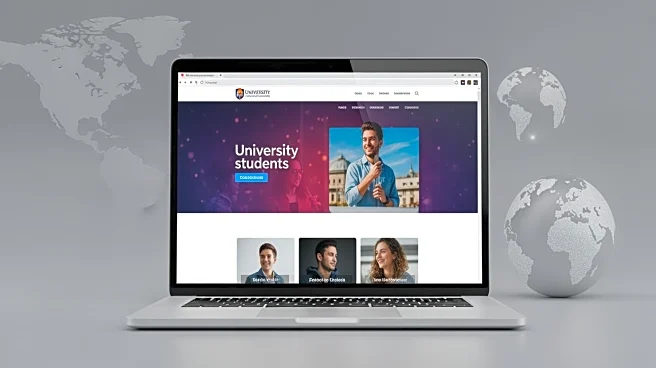What's Happening?
University websites are becoming crucial in student recruitment as institutions face heightened competition due to stagnating domestic demand and increased pressure on international recruitment targets.
The digital experience offered by university websites is pivotal in shaping first impressions and influencing student decisions. With students questioning the value of a degree and parents scrutinizing outcomes, websites serve as strategic tools for generating trust and differentiation. The report 'Clearing 2025' highlights systemic weaknesses and opportunities for universities to improve digital performance during clearing, a critical period for student choice. The findings emphasize the importance of addressing digital challenges to enhance student experience and institutional resilience.
Why It's Important?
The shift towards digital platforms in student recruitment reflects broader changes in higher education, driven by technological advancements and evolving student expectations. As competition intensifies, universities must leverage their websites to attract and retain students, impacting enrollment numbers and financial stability. The emphasis on digital experiences aligns with global trends in education, where students increasingly seek intuitive and informative online interactions. This development underscores the need for universities to adapt to changing dynamics and invest in digital strategies to remain competitive in a volatile and uncertain environment.
Beyond the Headlines
The focus on university websites highlights the intersection of technology and education, raising questions about the future of traditional recruitment methods. As digital platforms become central to student engagement, universities must navigate ethical considerations related to data privacy and accessibility. The reliance on digital tools also reflects broader societal shifts towards online interactions, influencing cultural perceptions of education and institutional identity. This trend may prompt long-term changes in how universities approach marketing and communication, potentially reshaping the landscape of higher education.











